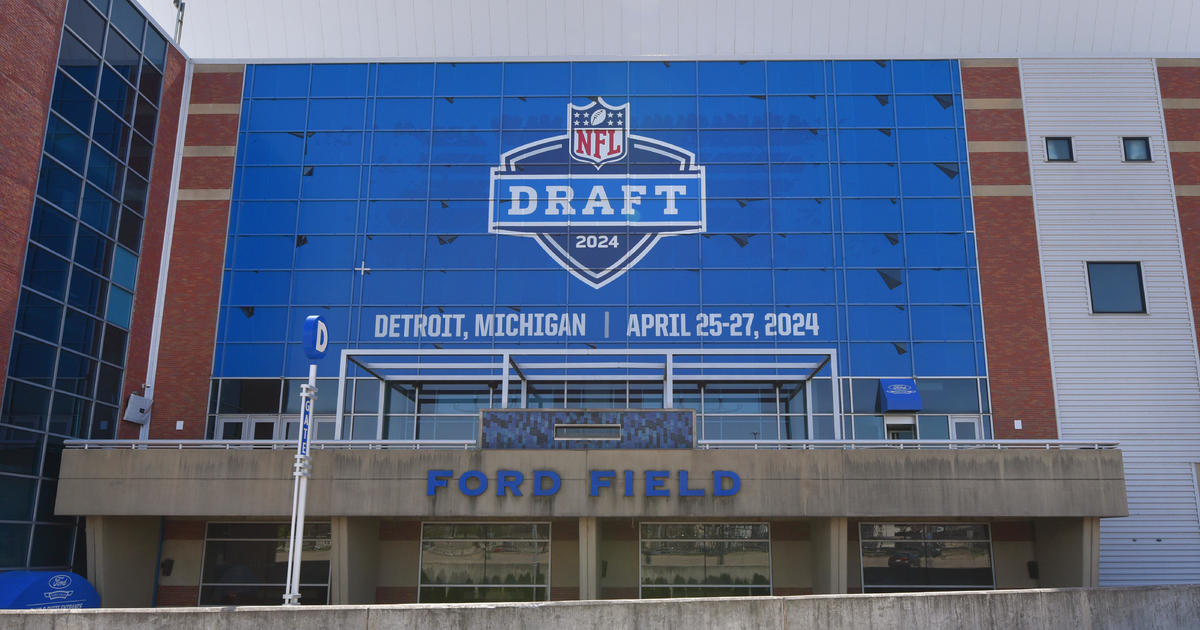Timeline Of Detroit's Financial Crisis
DETROIT (AP) — A timeline of Detroit's financial troubles:
___
2005-2006
— Detroit issues $1.44 billion of new debt in the form of pension obligation certificates to fund the city's two retirement systems. A 30-year repayment schedule is negotiated. Then-Mayor Kwame Kilpatrick agrees to swap a fixed interest rate for a variable one. A market rate increase would be to the city's benefit. Falling rates mean Detroit would pay more.
— City issues $250 million in bond debt and begins seven-year run of posting at least $150 million in annual budget deficits. The cumulative deficit between 2005 and 2011 equaled $1.38 billion.
___
2008:
— Interest rates begin to fall during national recession.
___
2009:
— Due to falling interest rates, Detroit is required to pay an additional $1.14 billion in interest and hedging derivatives as part of the certificate of participation and swaps agreements. City pledges casino wagering tax revenue for future payments to avoid defaulting on the agreements and $400 million lump sum termination payment. Detroit loses about $11 million monthly in casino tax revenue.
___
2010:
— Short term cash flow shortages become more severe. Detroit receives $250 million in fiscal stabilization bonds, $55 million in delinquent property tax receipts from Wayne County and $20 million from the DTE escrow account.
— The city has no deficit reduction plan and debt continues to soar. The city borrows $447 million from specific budget items to fund other budget items.
— Questionable balances appear in audit report of pension plans.
___
2011:
— A financial review team is recommended on Dec. 21 after state performs preliminary review of Detroit's finances.
___
2012:
— Gov. Rick Snyder appoints review team in January.
— Review team determines on March 26 that Detroit is in "severe financial distress."
— Consent agreement giving the state limited oversight of Detroit's finances put in place in April. This allows Mayor Dave Bing to avoid financial emergency declaration. The city is required to produce, among other things, a three-year revenue and expenditure plan.
— A second preliminary review determines Detroit has a "severe financial problem" and in December recommends appointment of review team.
___
2013:
— Review team determines in Feb. 10 report that Detroit is in a "financial emergency," another step necessary for the eventual appointment of an emergency manager. Snyder confirms the report and on March 1 informs Bing and Detroit City Council.
— Snyder appoints turnaround specialist Kevyn Orr as Detroit's emergency manager on March 25.
— Orr submits Financial and Operating Plan to state on May 12. He holds a public meeting in Detroit on the plan on June 10.
— Orr and his team meet with representatives of banks, unions and other Detroit creditors on June 14 at Detroit Metropolitan Airport; releases proposal to creditors.
— Orr makes Detroit the largest U.S. city to file for bankruptcy on July 18; cites debt of $18 billion or more.
— U.S. Bankruptcy Judge Steven Rhodes on July 24 grants Orr's request to put a permanent freeze on three lawsuits filed in Ingham County, including another judge's decision that Snyder trampled the Michigan Constitution and acted illegally in approving the Chapter 9 filing. That ruling and others had threatened to derail the bankruptcy.
— Dozens of creditors, including banks, bond holders and employee pension systems, meet Aug. 19 deadline to file objections to bankruptcy petition.
— Nine-day trial before Rhodes begins to determine if Detroit is eligible for bankruptcy begins Oct. 23.
— Orr testifies on Oct. 25 that he did not promise to seek bankruptcy protection for the city as a condition of getting Detroit's emergency manager job.
— Rhodes on Dec. 3 rules that Detroit is eligible to fix its finances in bankruptcy court.
_____
2014:
— Orr files a plan Feb. 21 to restructure the Detroit's $18 billion debt by making cuts to pensions and creditors while offering a blueprint for emerging from bankruptcy. The goal: A leaner, cleaner and safer Detroit.
— An effort by philanthropists to save Detroit's art treasures culminates June 20 when Snyder signs a bill authorizing millions in state help. It is part of what has been called the Grand Bargain, which still needs approval from the city's pensioners and workers.
— City workers and retirees approve pension cuts by a landslide on July 22, a crucial step to emerging from the Detroit's bankruptcy.
— Rhodes on Sept. 2 begins hearing evidence on whether he should approve the city's plan to emerge from billions of dollars in debt.
— Detroit reaches a tentative deal on Sept. 9 to pay a key creditor, bond insurer Syncora Guarantee, 26 cents on the dollar, a move that could clear the biggest hurdle in the city's plan to reduce its debts and emerge from bankruptcy protection.
— Detroit's plan to get out of bankruptcy is feasible, a court-appointed expert testifies Oct. 22, the last witness in the trial to determine whether Detroit can get back on its feet.
— Judge Steven Rhodes on Nov. 7 approves Detroit's plan to get out of bankruptcy, ending the largest public filing in U.S. history.
___
Source: City of Detroit and archives of The Associated Press.
Copyright 2014 The Associated Press. All rights reserved. This material may not be published, broadcast, rewritten or redistributed.



